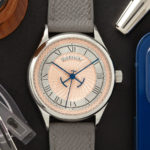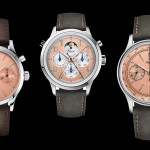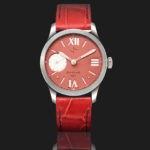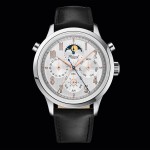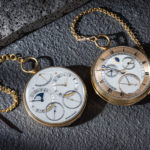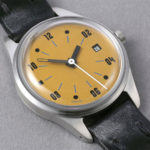MB&F Introduces the HM11 Architect
A futurist home for the wrist.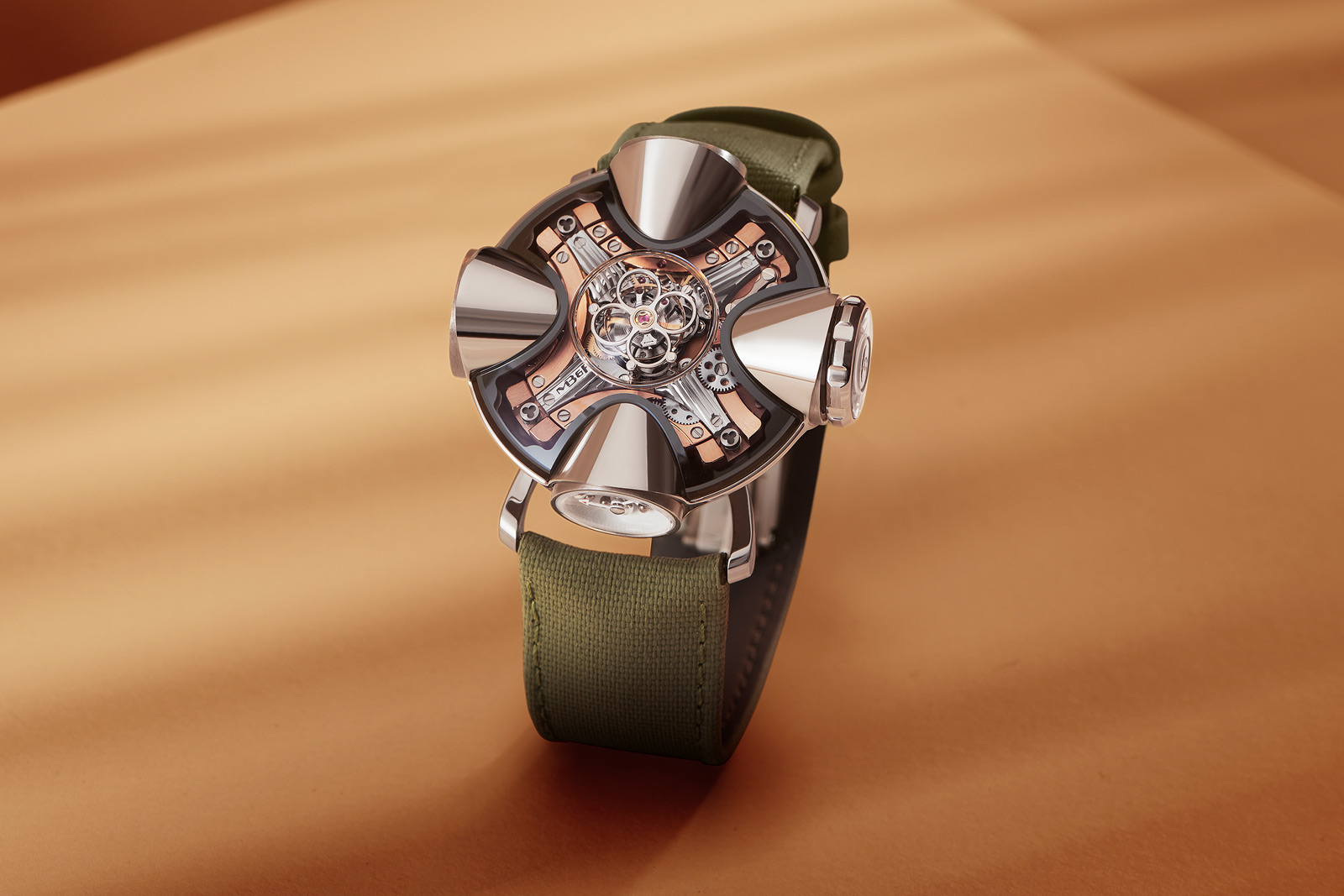
MB&F has introduced its latest Horological Machine, the HM11 Architect, inspired by 1960s futurist architecture. Featuring a central flying tourbillon surrounded by four polished titanium lobes, three of which contain dials, the HM11 offers a novel rotating case that pulls double duty as an enormous winding crown.
Designed by longtime collaborator Eric Giroud, the HM11 takes cues from habitology, an architectural movement of the late 1960s that challenged conventional norms for domestic buildings, preferring organic forms to straight walls and rectangular windows.
Initial thoughts
As someone who favours traditional design, I usually find Horological Machines a tad large and a bit ostentatious. But the HM11 is more compact and sleeker than its specs suggest.
In fact, the HM11 is the most traditional Horological Machine yet on the wrist, with a round 42 mm case and simple lugs. It has a surprisingly small footprint on the wrist, though it is tall, standing 23 mm at its highest, so it’s not for the faint of heart (or the long-sleeved).
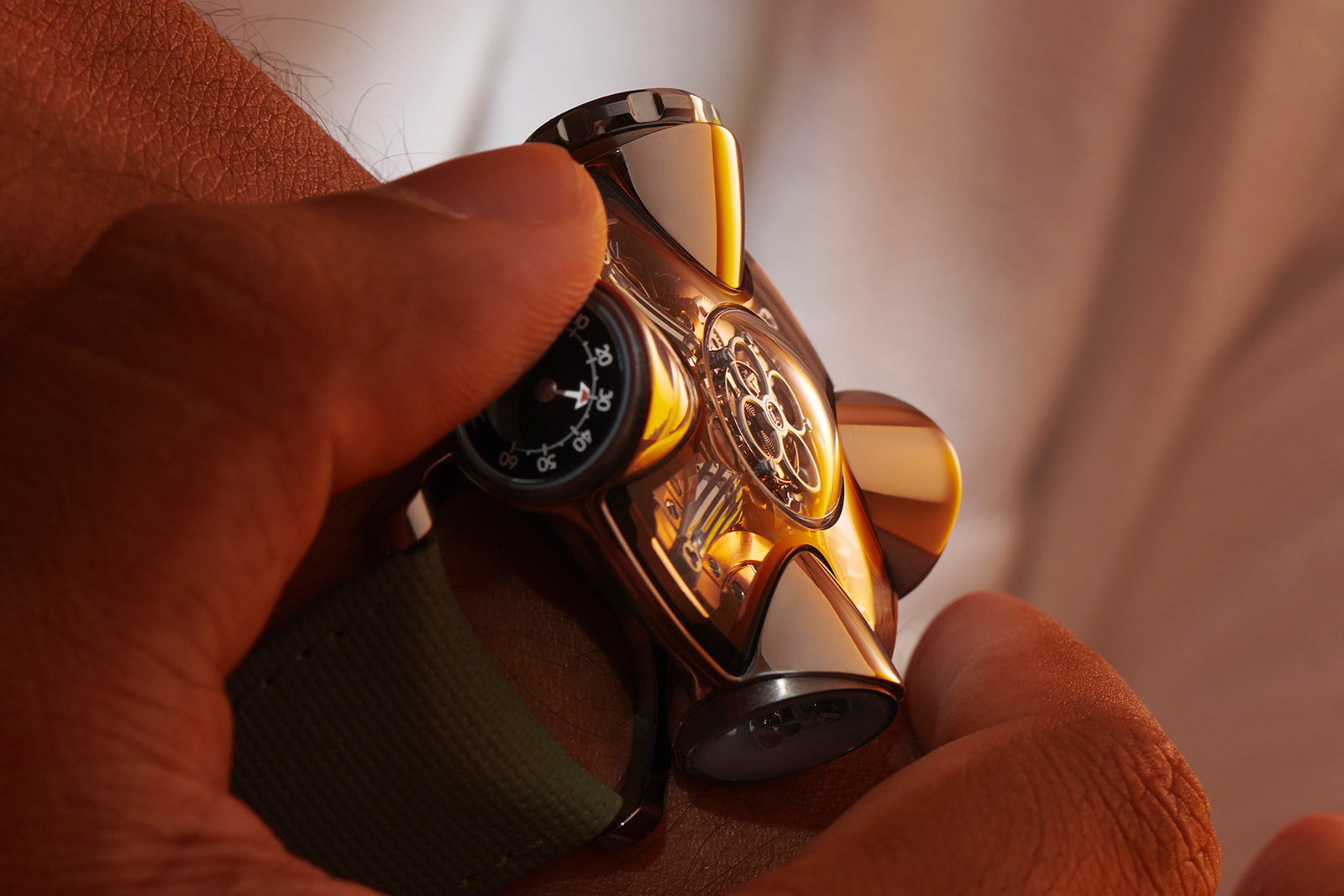
Yet even by the sculptural standards set by previous Horological Machines, the HM11 feels ambitious, particularly in the case construction. The complex form of the case, for example, requires 19 gaskets to ensure 20 m of water resistance.
There are also numerous hidden details, like a proprietary shock dampening system adapted from the aerospace industry, that contribute to an overall package that is deeply satisfying; the longer you look the more you discover.
I was initially sceptical of the inclusion of a thermometer, which struck me as a gimmick. Compared to the power reserve display, which makes perfect sense in a watch that features both a lengthy power reserve and a novel winding mechanism, the thermometer seemed like an afterthought.
But after consideration it makes sense in the context of the HM11’s domestic inspiration, since a thermostat is an almost universal feature of the modern home. Furthermore, the execution is outstanding and traditional since it relies on a bimetallic strip just like 19th century pocket watches.
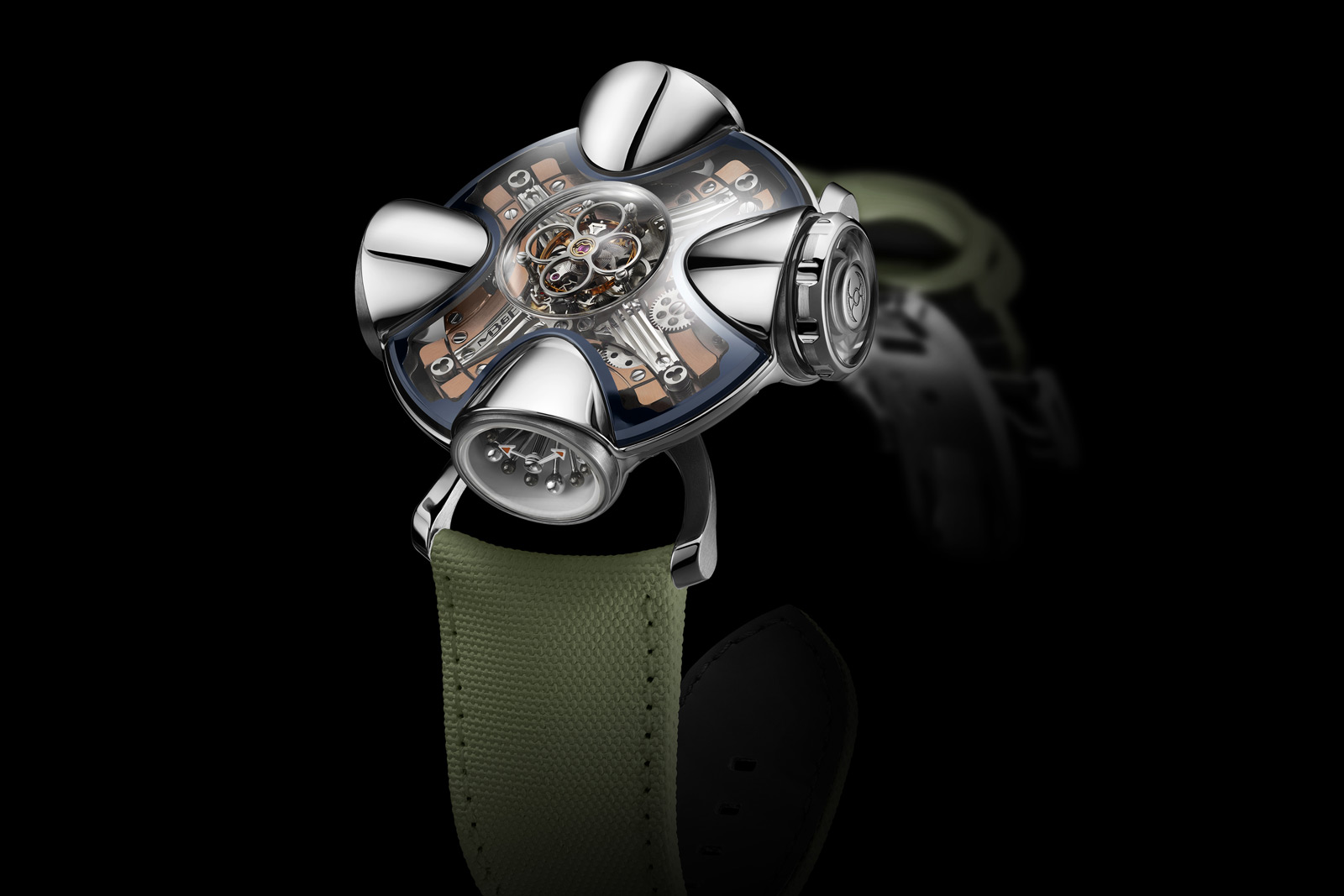
In terms of value, there are certainly cheaper ways to get a flying tourbillon, but MB&F has few peers in the niche of haute horlogerie characterised by these kinds of design-forward kinetic sculptures, making such comparisons largely irrelevant.
Mid-century futurism for the wrist
Instantly recognisable as a Horological Machine, the HM11 nonetheless breaks new ground for MB&F in terms of its user interface. While the HM11 features a traditional crown for setting the time, winding is accomplished by rotating the entire watch case clockwise.
The rotating case gives the watch multiple personalities by enabling the wearer to cycle through the various displays like a carousel and choose whether to view the time, the power reserve, or the temperature in their line-of-sight.
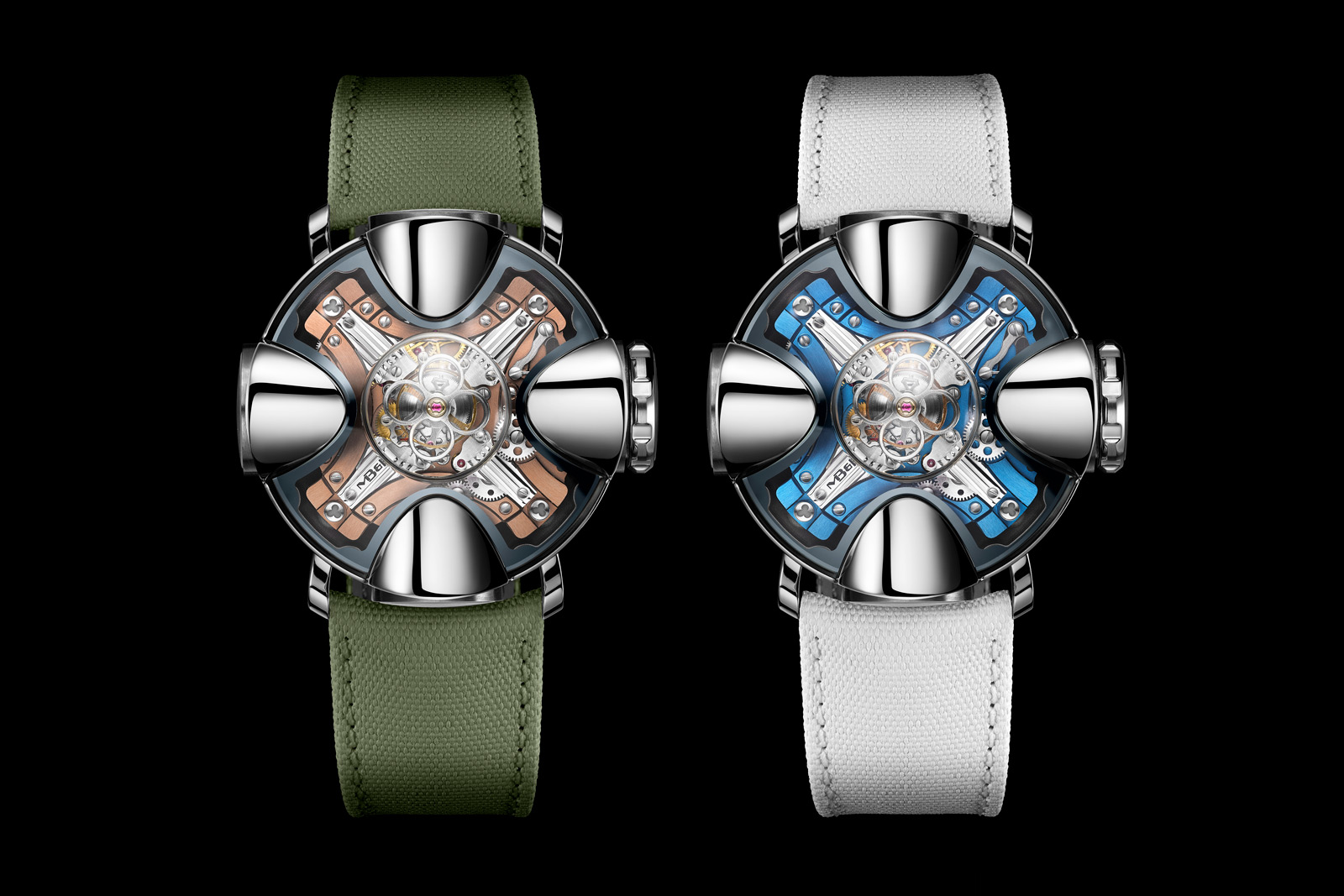
Furthermore, this construction increases winding efficiency; the 42 mm diameter of the watch case provides far more leverage than a typical winding crown, reducing the number of rotations needed to wind the watch. In fact, a 45-degree rotation is enough to generate 72 minutes of running time, and just 10 complete rotations results in a full power reserve of 96 hours.
While previous Horological Machines have taken inspiration from seventies sports cars, WWII fighter planes, jellyfish, and spaceships, the HM11 is the first Horological Machine to take direct inspiration from modern architecture.
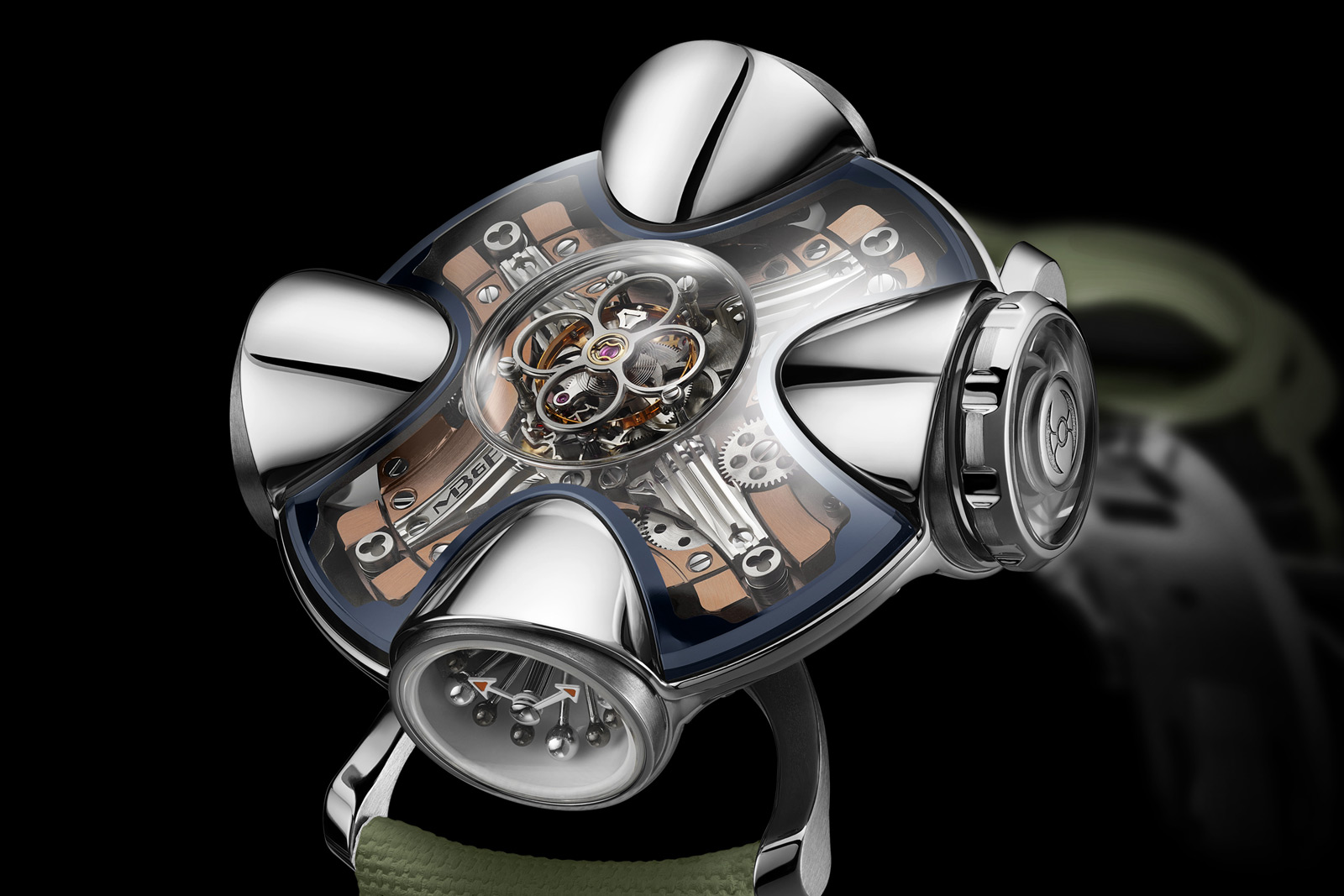
Looking at the HM11, the architectural influences are clear. In profile, the case shape reminds me of the Futuro Pod, a type of round, prefabricated house designed by Finnish architect Matti Suuronen in the 1960s. While Futuro Pods never became mainstream, they have become symbolic of the kind of jet-age futurism that MB&F often celebrates with its Horological Machines.
The markers for the time and power reserve displays are made of polished aluminium spheres and smaller, darker titanium spheres. For the power reserve, the relative sizes of the spheres indicate the remaining running time, with the largest sphere, at 2.4 mm in diameter, indicating a full wind.
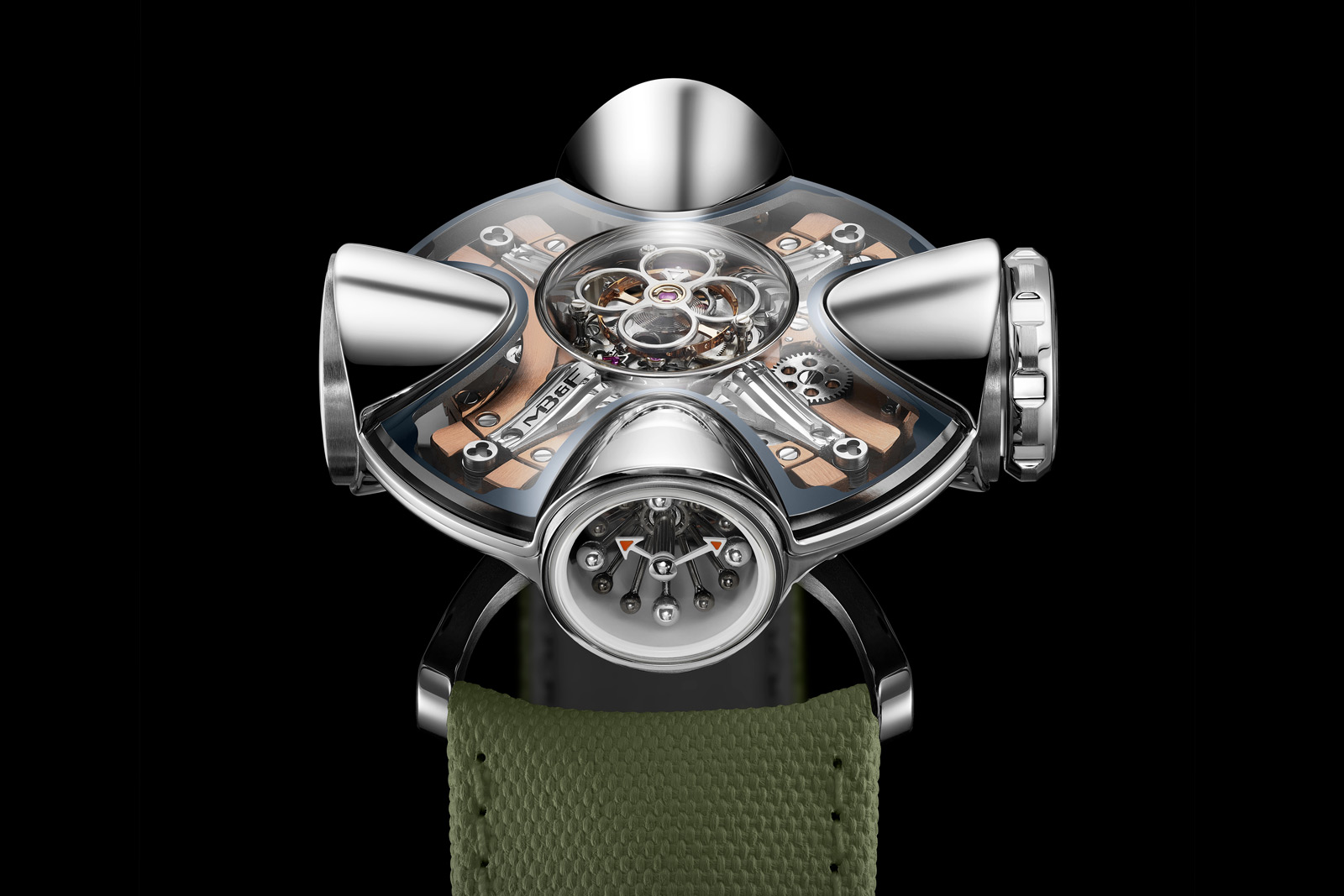
Like all Horological Machines since the HM3, the HM11 is a driver’s watch, meaning the time is read not from the top but rather from the side. The HM11 takes this concept even further with its rotating case, enabling the wearer to choose which of the three dials is in view at any given time.
The HM11 also includes a relatively unusual complication and a first for the brand: a thermometer. While thermometers were once fairly common in large precision clocks and even some pocket watches, they are rarely used in wristwatches.
Available with either a Celsius or Fahrenheit scale, the thermometer is capable of displaying temperatures between -20° and 60° Celsius, or 0° to 140° Fahrenheit. The thermometer works using a coiled bimetallic strip, which expands and contracts as temperatures change.
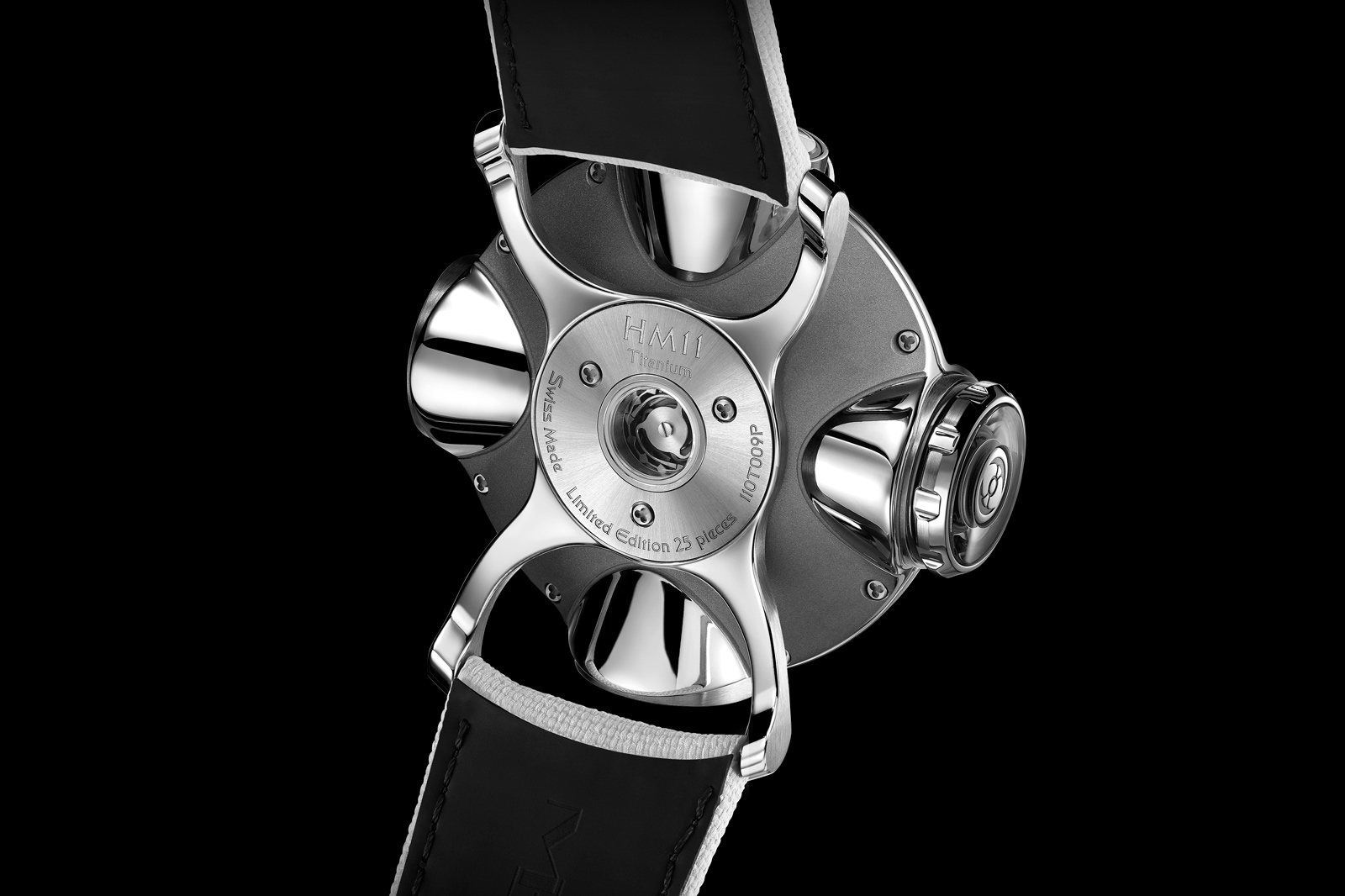
This principle has a long history in horology dating back to the early marine chronometers of the mid-eighteenth century, which used this principle to adjust the effective length of hairsprings. Later, this technology was used to create the first temperature compensating balance wheels, which were a staple of all high-grade watches until they became obsolete with the introduction of modern alloys like Glucydur.
Key facts and price
MB&F HM11 Architect
Diameter: 42 mm
Height: 23 mm
Material: Titanium
Crystal: Sapphire
Water resistance: 20 m
Movement: HM11
Functions: Hours, minutes, seconds, power reserve, and temperature
Winding: Manual wind
Frequency: 18,000 beats per hour (2.5 Hz)
Power reserve: 96 hours
Strap: Rubber strap with titanium tang buckle
Limited edition: Yes, 50 pieces (25 with blue dial plate and 25 with red gold dial plate)
Availability: At MB&F M.A.D. Galleries and eShop, as well as retailers
Price: CHF198,000 (excluding taxes)
For more, visit MB&F.com.
Back to top.

